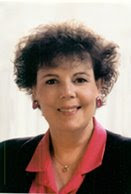 The Walking Foot is
used when stitching the layers of a quilt together. The Walking Foot uses a
walking technique for increased control of feeding the fabric into the sewing
machine. Guide bars can be added to the foot if sewing rows of straight lines
across the quilt. This foot has its own set of feed dogs which help to keep
layers of fabric from shifting during the sewing process. It can also be used
on fabrics that tend to move around and are hard to sew on such as velvet and
corduroy.
The Walking Foot is
used when stitching the layers of a quilt together. The Walking Foot uses a
walking technique for increased control of feeding the fabric into the sewing
machine. Guide bars can be added to the foot if sewing rows of straight lines
across the quilt. This foot has its own set of feed dogs which help to keep
layers of fabric from shifting during the sewing process. It can also be used
on fabrics that tend to move around and are hard to sew on such as velvet and
corduroy.
Five reasons you
need a walking foot:
1. Attaching the binding
If you attempt to attach a binding to your quilt with a utility foot,
then the top will slide along as you sew, and the quilt will be puckered
underneath the binding when you turn it back. If you apply the binding with the
walking foot attached, then you should avoid this problem.
Sewing a grid across the quilt surface can be a trap for unwary players,
without the walking foot attached to your machine. Pulling along the rows is a
result that you want to avoid.
Many walking feet have a guide arm which attaches so you can quilt in
set distances from the previous row, for a grid or line pattern.
3. Stitching in the ditch
This is stitching very close to the seam on the low side of two
adjoining patches, to stabilise the quilt, before any design quilting is
attempted.
4. Sewing continuous curves
Curved quilting across the patches in a quilt in a form of outline
quilting.
5. Sewing free-form curves
 Using the walking foot to create curved grids or cables across the
surface, making the quilting simple and effective.
Using the walking foot to create curved grids or cables across the
surface, making the quilting simple and effective.










No comments:
Post a Comment